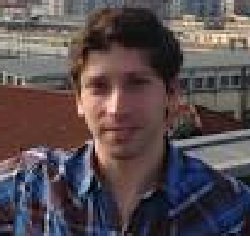You are here :
Published on February 18, 2022– Updated on April 5, 2023
Mariano Gaston BEIRO VILLANI

University of Buenos Aires - Argentina
Visiting Scholar invited by laboratory LPTM
Curriculum Vitae
1. ln the "Pre-problem stage" only a numerical minority suffers from the problem.
2. The second stage is that of "Alarmed discovery and euphorie enthusiasm", and here people suddenly become aware and alarmed about the problem.
3. ln the third stage ("Realiza!ion of the cost") people realize of the high costs of the possible solutions and the low probability of success.
4. Then, a decline in the intensity of interest cornes, and attention shifts towards other issues.
5. Finally, the post-problem stage is a lime of smaller attention, but different from the pre-problem stage as the presence of new institutions may give support to a low threshold of attention, which might be reactivated later.
Despite the fact that this model has been used to explain attention on a variety of topics, there have been few efforts to propose a microscopical explanation for this collective behavior. Up to what we know, the only work on this line is [6] from 2004, in which an agent-based model with 20 agents is adjusted to a discussion on "summer smog" throughout 15 years in a German newspaper.
The aim of this visit is to work Dr. Laura Hernandez of LPTM on the elaboration of a dynamical model for the Downs' hypothesis, and to validate it using a large news corpus from the New York Times.
References
[1] Anthony Downs. Up and down with ecology: The issue-attention cycle. The politics of american economic policy making, 48, 1996.
[2] Karen K Petersen. Revisiting downsâ issue-attention cycle: international terrorism and us public opinion. Journal of strategic security, 2(4):1-16, 2009.
[3] Craig Trumbo. Constructing climate change: claims and frames in us news coverage of an environmental issue. Public understanding of science, 5:269-283, 1996.
[4] Ines Larcher and Irene Neverla. The dynamics of issue attention in online communication on climate change. Media and Communication, 3(1):17-33, 2015.
[5] S Mo Jang, Yang Jin Park, and Haon Lee. Round-trip agenda setting: Tracking the intermedia process over lime in the ice bucket challenge. Journalism, 18(10): 1292-1308, 2017.
[6] Jens Newig and Julia Hesselmann. Modelling the dynamics of public attention towards environmental issues. 2nd International Congress on Environmental Modelling and Software, 2004.
Visiting Scholar invited by laboratory LPTM
Curriculum Vitae
Research project
Public-attention models in mass media
In 1972, A. Downs proposed a model of public opinion to explain the evolution of public support to different policies [1] in the US. He used the model for the analysis environmental issues during the 70's, and since then it has been applied to explain the evolution of discussions on terrorism [2] and climate change [3, 4], and even of viral phenomena in social media [5]. Briefly, Downs proposed a cycle formed by five stages in order to model collective attention:1. ln the "Pre-problem stage" only a numerical minority suffers from the problem.
2. The second stage is that of "Alarmed discovery and euphorie enthusiasm", and here people suddenly become aware and alarmed about the problem.
3. ln the third stage ("Realiza!ion of the cost") people realize of the high costs of the possible solutions and the low probability of success.
4. Then, a decline in the intensity of interest cornes, and attention shifts towards other issues.
5. Finally, the post-problem stage is a lime of smaller attention, but different from the pre-problem stage as the presence of new institutions may give support to a low threshold of attention, which might be reactivated later.
Despite the fact that this model has been used to explain attention on a variety of topics, there have been few efforts to propose a microscopical explanation for this collective behavior. Up to what we know, the only work on this line is [6] from 2004, in which an agent-based model with 20 agents is adjusted to a discussion on "summer smog" throughout 15 years in a German newspaper.
The aim of this visit is to work Dr. Laura Hernandez of LPTM on the elaboration of a dynamical model for the Downs' hypothesis, and to validate it using a large news corpus from the New York Times.
References
[1] Anthony Downs. Up and down with ecology: The issue-attention cycle. The politics of american economic policy making, 48, 1996.
[2] Karen K Petersen. Revisiting downsâ issue-attention cycle: international terrorism and us public opinion. Journal of strategic security, 2(4):1-16, 2009.
[3] Craig Trumbo. Constructing climate change: claims and frames in us news coverage of an environmental issue. Public understanding of science, 5:269-283, 1996.
[4] Ines Larcher and Irene Neverla. The dynamics of issue attention in online communication on climate change. Media and Communication, 3(1):17-33, 2015.
[5] S Mo Jang, Yang Jin Park, and Haon Lee. Round-trip agenda setting: Tracking the intermedia process over lime in the ice bucket challenge. Journalism, 18(10): 1292-1308, 2017.
[6] Jens Newig and Julia Hesselmann. Modelling the dynamics of public attention towards environmental issues. 2nd International Congress on Environmental Modelling and Software, 2004.


